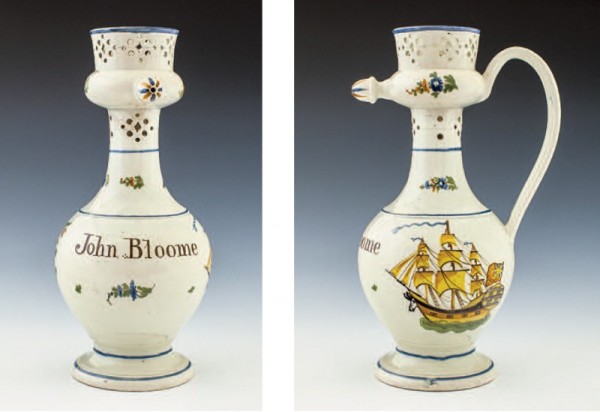
Puzzle jug, probably South Yorkshire, England, ca. 1798. Pearlware. H. 11". (Author’s collection; unless otherwise noted, all photos by Robert Hunter.) This undated pearlware puzzle jug was made for shipmaster John Bloome and includes polychrome-painted decoration depicting his ship Hopewell.
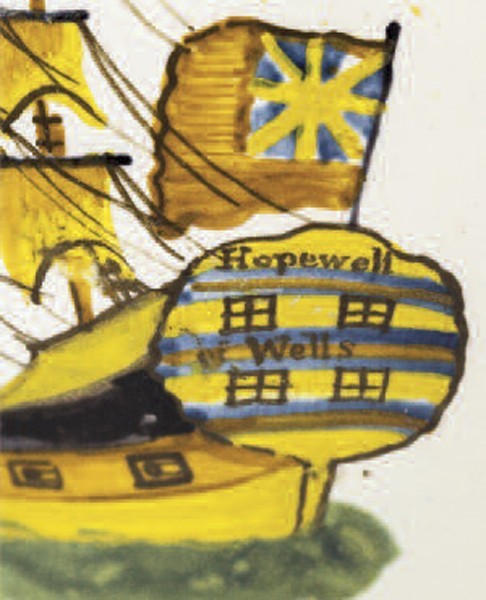
Detail of the ship stern on the puzzle jug illustrated in fig. 1. The image shows the ship’s name as “Hopewell” and below it “Wells” and what at first looked like an arrow-pierced heart but turned out to be “of”—i.e., Hopewell of Wells.
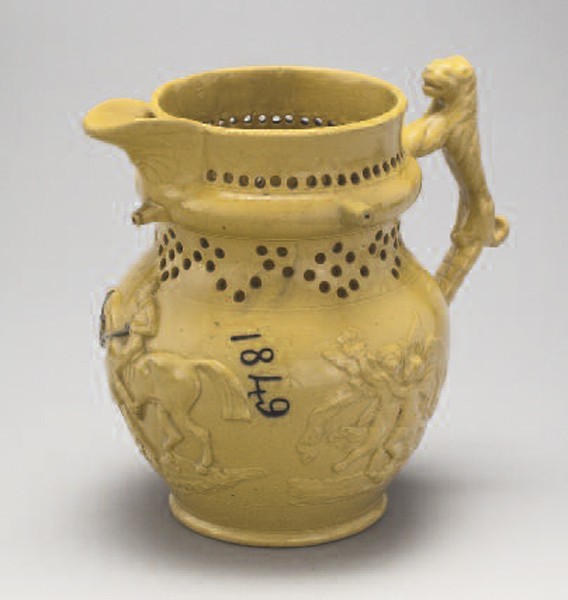
Puzzle jug, attributed to Ferrybridge Pottery, Yorkshire, England, 1849. Yellow ware. H. 7 1/2". Dated 1849 and inscribed with the initials MHS in blue slip. (Author’s collection.) The form is an example of declining elegance in puzzle jug production.
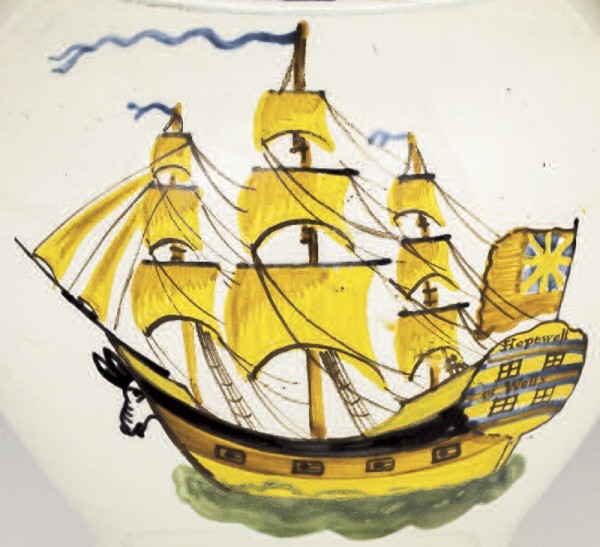
The ship Hopewell in a detail of the puzzle jug illustrated in fig. 1. The ship is under sail and flying the flag (red ensign) of the British Merchant Navy.
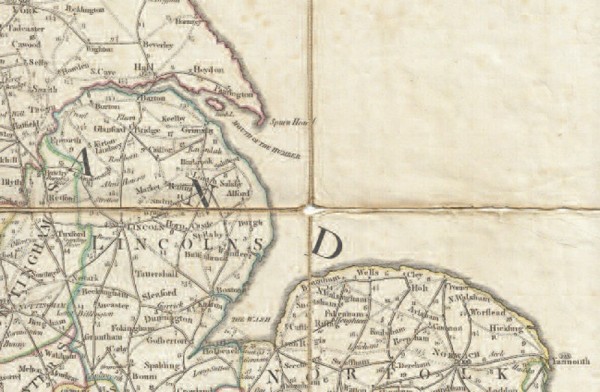
Detail of William Faden’s The Roads of Great Britain. Initneraire de la Grande Bretagne, 1790. (Courtesy, Geographicus Rare Antique Maps.) The map shows a portion of the east coast of England, with the ports of Wells and Hull indicated.
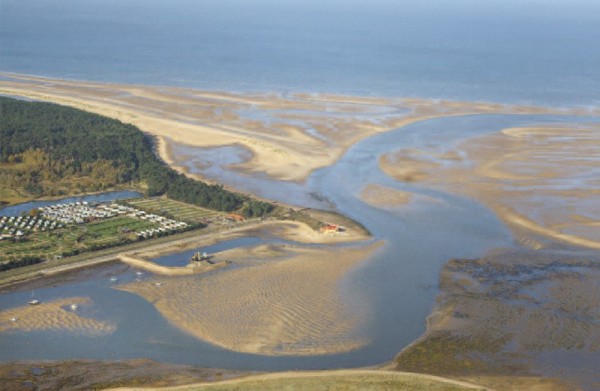
The Wells estuary at low tide. The Hopewell ran aground about three miles to the east. (Photo, Mike Page Aerial Photography, www.mike-page.co.uk.)

Photo of a transfer-printed creamware plate showing the encounter between the Baltic trader Crow Isle and John Paul Jones in 1779. Reproduced from Oxley Grabham, Yorkshire Potteries, Pots and Potters (1916; reprint, Wakefield: S. R. Publishers, 1971). The plate, now lost, is allegedly the product of a Hull potter.
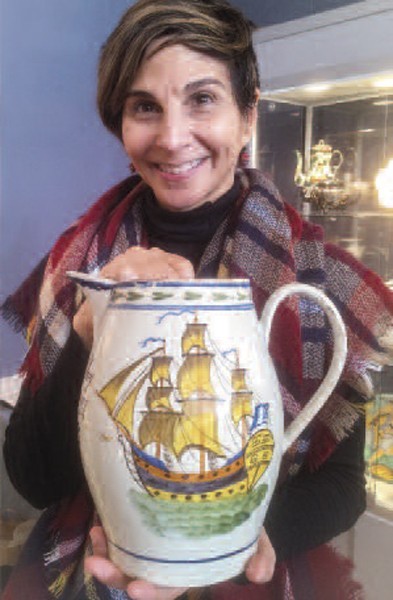
Ceramic artist Michelle Erickson holds the Admiral Duncan commemorative pitcher discovered at the 2016 New York Ceramics Fair in the booth of London dealer Garry Atkins.
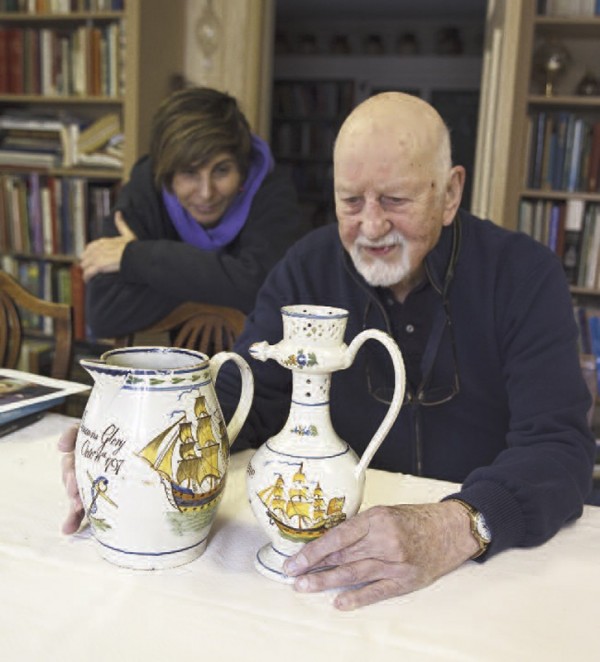
The Venerable pitcher and Hopewell jug in hand-painted pearlware, the former dated 1797 and a memorial to victory at the Battle of Camperdown. Both are believed to be the product of a single Leeds painter.
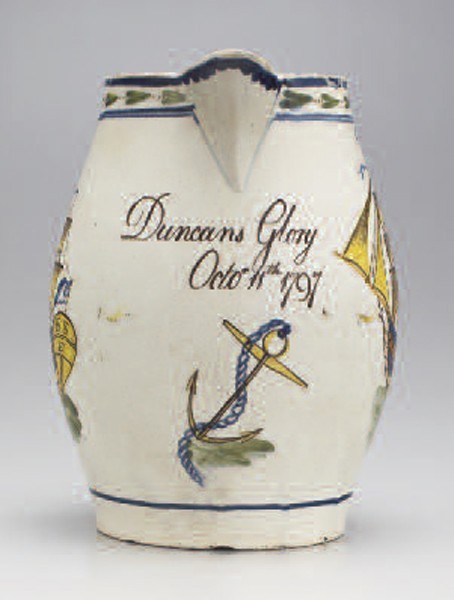
Pitcher, probably South Yorkshire, England, ca. 1797. Pearlware. H. 8 1/2". Inscribed on front: “Duncans Glory / Octo 11th 1797” over a blue-chained anchor.
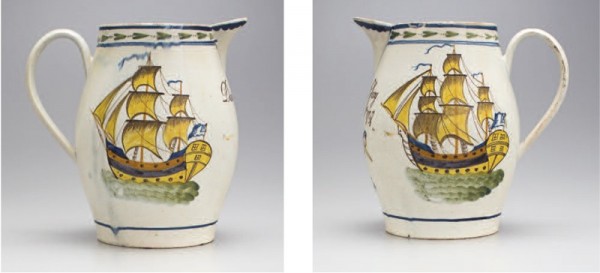
Side views of the pitcher illustrated in fig. 10. Note the marked differences between the two renderings of the same ship.
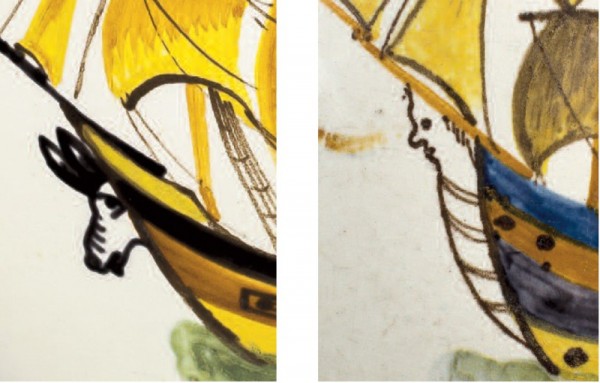
Figurehead details of the Hopewell (left) and the Venerable (right).

English and Scottish flags at the sterns of the Hopewell and Venerable.
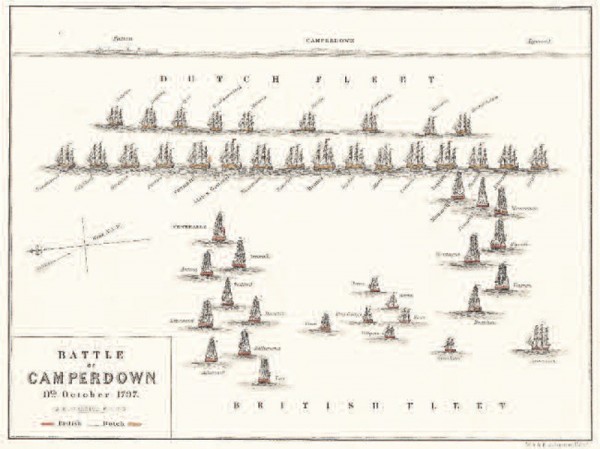
Battle of Camperdown, 11th October 1797, hand-colored engraving by A. K. Johnston F.R.G.S., published by William Blackwood and Sons, Edinburgh and London, 1848.
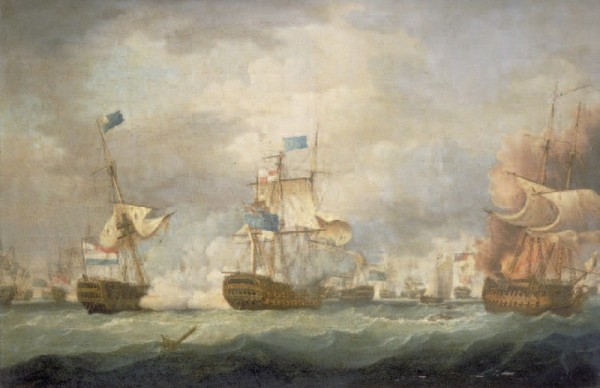
Thomas Witcombe, Battle of Camperdown, 1798. Oil on canvas, 35" x 53". (© National Maritime Museum, Greenwich, London.) This is one of several paintings of the Battle of Camperdown, showing the blue-flagged Venerable at the center of the action alongside Admiral Van de Winter’s flagship.
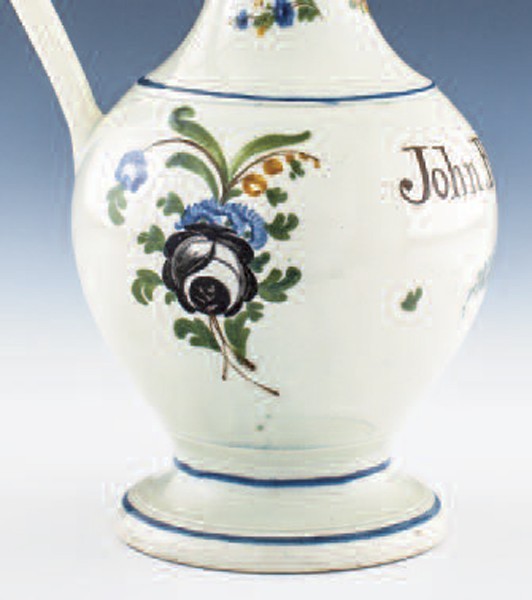
Detail of the floral decoration painting on the puzzle jug illustrated in fig. 1.

Photograph of a pearlware puzzle jug attributed to Leeds, dated 1799 and with a foot similar to that of the Bloome jug. Reproduced from Oxley Grabham, Yorkshire Potteries, Pots and Potters (1916; reprint, Wakefield: S. R. Publishers, 1971). Once in the York Castle Museum, the jug is now missing.
